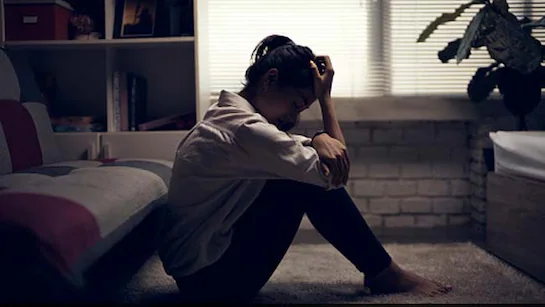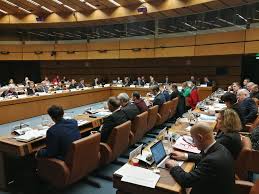- Courses
- GS Full Course 1 Year
- GS Full Course 2 Year
- GS Full Course 3 Year
- GS Full Course Till Selection
- CSAT
- 5 LAYERED ARJUNA Mentorship
- Public Administration Optional
- Online Program
- GS Recorded Course
- NCERT Batch
- Polity Module Course
- Geography Module Course
- Economy Module Course
- AMAC Module Course
- Modern India, Post Independence & World History Module Course
- Environment Module Course
- Governance Module Course
- Science & Tech. Module Course
- International Relations and Internal Security Module Course
- Disaster Management Module Course
- Ethics Module Course
- Essay Module Course
- Current Affairs Module Course
- ABOUT US
- OUR TOPPERS
- TEST SERIES
- FREE STUDY MATERIAL
- VIDEOS
- CONTACT US
India’s Progress in Preventing Suicides: A 30% Decline in Death Rates (1990-2021)
India’s Progress in Preventing Suicides: A 30% Decline in Death Rates (1990-2021)
22-02-2025

- Recent research published in The Lancet Public Health reports a significant decrease in suicide rates in India, with a 30% reduction in suicide deaths from 1990 to 2021.
- This study, based on the Global Burden of Diseases, Injuries, and Risk Factors Study (GBD 2021), shows encouraging trends but also highlights ongoing challenges in suicide prevention.
Suicide Death Rate in India

-
1990 Data: In 1990, the suicide rate in India was 18.9 per lakh people.
-
2019 Data: The rate dropped to 13.1 per lakh by 2019.
-
2021 Data: The rate further declined to 13 per 100,000 by 2021.
-
Overall Decrease: Over a period of three decades, suicide deaths in India decreased by 31.5%.
-
This reduction indicates progress in mental health awareness, interventions, and suicide prevention strategies across the country.
Factors Contributing to Suicide Rates
-
The study found that women with education up to Class XII had higher suicide rates than those with less education.
-
This indicates a complex relationship between education, empowerment, and mental health.
-
For educated women, stress from family-related issues and financial challenges played a significant role in suicides.
Gender-Specific Trends in Suicide Rates
Women
-
Suicide Rate in 1990: 16.8 per lakh women.
-
Suicide Rate in 2021: 10.3 per lakh women.
-
Key Finding: Suicide rates among women decreased more significantly than those of men.
-
Top Causes: Family-related problems, domestic violence, and marital stress.
-
In 2021, suicide was the leading cause of death for women aged 15-39.
Men
-
Suicide Rate in 1990: 20.9 per 100,000 men.
-
Suicide Rate in 2021: 15.7 per lakh men.
-
Top Causes: While suicides were more frequent among men, road injuries were the leading cause of death, with suicide being the second.
Global Trends in Suicide
-
Global Suicide Rate: Every 43 seconds, a suicide occurs worldwide, leading to 740,000 deaths annually.
-
Gender Disparities:
-
Male Suicides: In 2021, 519,000 men died by suicide.
-
Female Suicides: In 2021, 227,000 women died by suicide.
-
Men are more likely to use lethal methods, such as guns, while women often opt for less lethal methods, such as poisoning or overdosing.
-
-
Global Decline in Suicide Rates: The global age-standardized suicide rate decreased by 40% from 1990 to 2021, with men experiencing a 34% decline and women a 50% decline.
What are challenges and recommendations for suicide prevention ?
Challenges and Areas for Improvement |
Recommendations for Further Progress |
Limited access to mental health resources in isolated communities |
Strengthen mental health resources, particularly in underserved areas, to make them more accessible. |
Inadequate mental health infrastructure, especially in rural areas |
Launch public health campaigns to reduce stigma around mental health and promote open discussions on suicide prevention. |
Lack of coverage for mental health care, coupled with chronic health issues, leading to higher suicide rates in older age groups |
Gather more accurate and detailed data on the causes of suicide, including familial and social factors, to design better intervention strategies. |
Social stigma surrounding mental health issues, deterring people from seeking help |
Focus on family counseling, and providing financial literacy programs to help reduce stress-related suicides, especially among younger individuals. |
What are Government Initiatives and Factors Responsible for Reducing Suicides in India
Decriminalization of Suicide
-
Mental Healthcare Act, 2017: The Act decriminalized suicide, meaning individuals who attempt suicide are no longer treated as criminals.
-
Impact: There is no longer any provision like Section 309 of the Indian Penal Code (IPC), which previously considered suicide a criminal offense.
-
Purpose: This move encourages individuals experiencing mental health crises to seek help without the fear of legal consequences.
National Suicide Prevention Strategy (2022)
-
Objective: To reduce suicide mortality by 10% by 2030.
-
Focus: The strategy aims to address the underlying mental health issues and other socio-economic factors contributing to suicides.
-
Implementation: It emphasizes strengthening healthcare systems, improving public awareness, and providing accessible mental health resources.
WHO's Mental Health Action Plan (2013–2030)
-
The WHO’s plan acknowledges the critical role of mental health in achieving health for all people.
-
The action plan aims to improve mental health care worldwide, reduce stigma, and ensure that mental health is integrated into public health policies.
-
Relevance to Suicide Prevention: The plan encourages countries, including India, to implement policies that reduce the risk of suicide and promote mental well-being.
Other Key Initiatives
-
National Mental Health Policy (2014):
-
It Aims to provide accessible and affordable mental health care to all, with a particular focus on integrating mental health services into primary healthcare.
-
It address the rising burden of mental health disorders and reduce the societal stigma associated with mental illnesses.
-
-
Sustainable Development Goal (SDG) 3.4
-
This global target promotes mental health as a critical component of well-being, with an emphasis on reducing premature mortality from mental health conditions, including suicide.
-
-
Toll-Free Helplines:
-
Manodarpan: A toll-free helpline offering psychological support, primarily for students and those facing mental health issues during stressful times.
-
KIRAN: A 24/7 national mental health support helpline that provides counseling services to those experiencing mental health crises.
-
Impact: These helplines play a crucial role in providing immediate mental health support, guidance, and resources for individuals in distress.
-
|
Also Read |
|
| Public Administration Optional | |
| UPSC Monthly Magazine | Question Answer Practice For UPSC |




